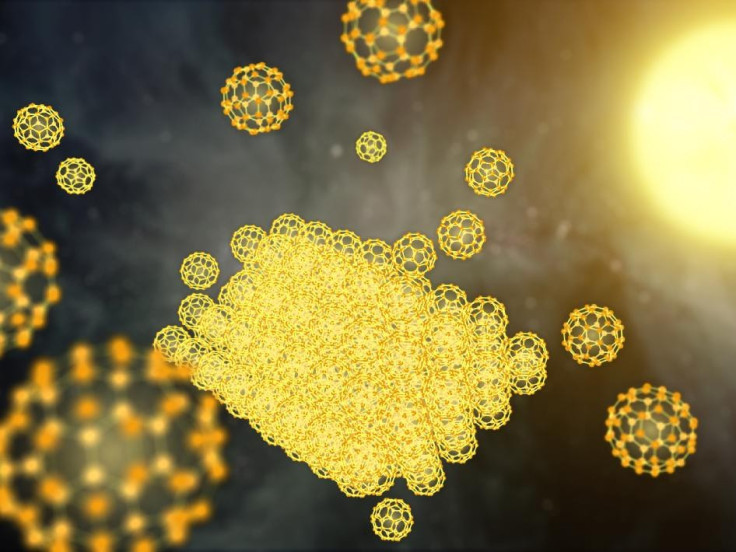Carbon capture made more efficient and environment-friendly by using 'buckyballs'

Researchers at Rice University have come up with an environment-friendly method to capture carbon using a carbon molecule, called buckyball, first discovered at Rice in 1985.
The proof-of-concept study shows that amine-rich compounds when combined with buckyballs (or carbon-60) can be used to capture carbon in a method that spares methane.
The method could be useful in capturing carbon dioxide at oil and gas wells and from industrial flue gases.
Amines (nitrogen based molecules) when crosslinked by buckyballs produced a brown, spongy material in which hydrophobic (water-avoiding) buckyballs forced the hydrophilic (water-seeking) amines to the outside, where passing carbon dioxide could bind to the exposed nitrogen.
Tests at various atmospheric pressures showed the Rice compound captured a fifth of its weight in carbon dioxide and did not degrade over many absorption/desorption cycles.
"We had two goals," Rice chemist Andrew Barron said. "One was to make the compound 100 percent selective between carbon dioxide and methane at any pressure and temperature. The other was to reduce the high temperature needed by other amine solutions to get the carbon dioxide back out again. We've been successful on both counts."
Unlike metal organic frameworks, the Rice compound absorbs wet carbon dioxide as well as dry.
Efficient reuse of carbon dioxide was another aim of the study.
"We noticed a long time ago that if we attached amines to carbon nanotubes or graphene, they lowered the temperature at which carbon dioxide dissolves," Barron said.
Industrial amine-based scrubbers must be heated to 140 degrees Celsius to release captured carbon dioxide.
While C-60 is costly compared to current amines used, Barron says the energy costs would be lower as less amounts were needed to remove the carbon dioxide.
Industrial scrubbers have to constantly replenish amines lost through heating by adding reagents.
The researchers are now looking at ways to improve the compound's capacity and rate of absorption.
Carbon-60, the soccer ball-shaped molecule made of 60 carbon atoms, also known as buckminsterfullerene (or the "buckyball") was discovered at Rice by Nobel Prize laureates Richard Smalley, Robert Curl and Harold Kroto in 1985.
Carbon capture has been one of the mitigation methods suggested to avoid emissions build up in the atmosphere, but have not taken off due to costs and storage issues. Not all are agreed on the safety of burying massive amounts of carbon dioxide into the earth.
© Copyright IBTimes 2025. All rights reserved.





















